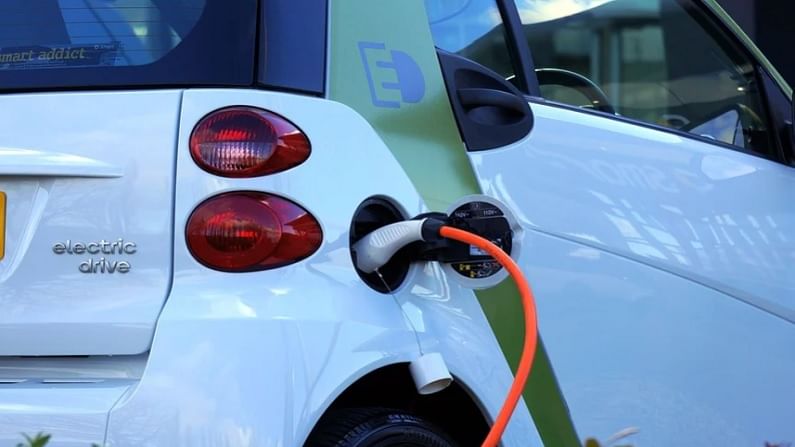Inducing shift to electric vehicles without shock treatment
It’s unlikely that much of the world would shift entirely to EVs before the middle of the next decade. In the interim, India could explore the use of bio-fuels like ethanol produced from sugarcane or crop residues

Will high motor fuel prices make electric vehicles more attractive to buy? Earlier this month, petrol touched Rs 100 a litre in some states.
In Delhi, it retailed for Rs 89.29 on February 16. Rising crude oil prices are partly to blame. The cost of the mix of Indian crude oils was $54.79 a barrel in January. This is 275% more from April’s low of $19.90 induced by pandemic panic. But the price of petrol in April in Delhi was Rs 69.59 and not 2.75 times lower. To put this in perspective, in February 2014, a barrel of Indian crude oils was trading at $106.19 – nearly double the current rate. But the price of petrol in Delhi was Rs 72.43 a litre. The current fuel price inflation is on account of taxes: excise and VAT account for 60% of it.
High fuel prices can induce a shift in consumer preference from traditional internal combustion engines to electric vehicles (EV). Though EVs cost more than conventional cars, they compensate over their lifetime in lower operating and maintenance costs. Mahindra and Mahindra says its e-Verito car consumes 18 units of electricity and does 110 km on a full charge. At the top rate of Rs 8 a unit in Delhi, the cost per km is Rs 1.30.
The per km running cost of the conventional version of the car is Rs 4.43 at the diesel price of Rs 79.70 a litre in Delhi and mileage of 18 kmpl in city driving conditions. The car costs about Rs 7.50 lakh. The base price of an electric version is around Rs 10 lakh. If one doesn’t have a travelling job in Delhi and just has to commute to and from the office within the city, an EV would be ideal. With fewer moving parts it would be low in maintenance as well.
Government programmes and policies play a part in inducing the shift. France has said only electric cars will be allowed from 2040. UK’s Prime Minister Boris Johnson says UK cars will be all electric by 2030. Norway intends to get there five years earlier. On 17 February, Ford’s European car division said it would produce only electric cars after 2030. Jaguar Land Rover, which is owned by the Tata Group, aspires to roll out only electric cars from 2025.
In January, General Electric said there would be only zero-emissions cars on its assembly line from 2035. Volkswagen has earmarked $88 billion for digitisation and improvement in battery power. It expects a fifth of the cars it sells to be electric by 2025.
The Indian government has also been making the right noises on greenhouse gas mitigation. It has offered to reduce the country’s 2030 carbon dioxide emissions to 33-35% of the 2005 levels. In 2017, road transport minister Nitin Gadkari shocked the automobile industry by declaring that India would go all-electric from 2030.
“I am going to do this, whether you like it or not. And I am not going to ask you. I will bulldoze it,” he said at an industry conference. He softened his stance later.
In 2015, the government added FAME to its compendium of acronyms. It’s a catch name for a programme for faster adoption of hybrids and electric vehicles. The second phase notified in March 2019 has earmarked Rs 10,000 cr over three years for creating demand for EVs including 7,000 buses, half a million rickshaws, 55,000 cars and one million motor bikes and scooters.
Not to be outdone, Delhi’s Aam Aadmi Party government announced on 25 February that its entire fleet of 2,000 cars would be replaced with EVs within six months. The vehicles would be hired or leased.
EVs will make little difference to climate change if they merely shifted the incidence of pollution without curtailing overall emissions. India has large reserves of coal and most of its power plants are coal-fired. Charging cars with such electricity does little to slow down the earth-warming rate.
India can phase out coal power generators by imposing a carbon tax and creating a market for carbon allowances. This should fast-forward its commitment to install 40 percent of power capacity from renewable sources by 2030. Alongside, it will have to invest massively in charging infrastructure.
It’s unlikely that much of the world would shift entirely to EVs before the middle of the next decade. In the interim, India could explore the use of bio-fuels like ethanol produced from sugarcane or crop residues. Ethanol can cut Co2 emissions by up to 90% compared to petrol. In Brazil, the average ethanol blending in petrol is 48%; India’s is 6%.
This has been achieved though a mandatory blending policy which prohibits the sale of petrol with less than 27% ethanol content and a carbon tax on petrol, which is not levied on ethanol or blended fuel. Even in diesel there is 12% ethanol blending. But India should not subsidise the production of cane. States like Maharashtra, large parts of which are deficient in water, should not grow it by drawing groundwater.
Ethanol blending will not only reduce emissions in the highly polluted cities of North India; it can also provide a sustainable source of income for farmers by helping them cut down sugar production which cannot be profitably sold in world markets.
India’s per capita emissions are low; as a country it is a large emitter. It needs to aggressively reduce Co2 emissions but must not resort to disruptive shock treatment.
(Views expressed are personal)